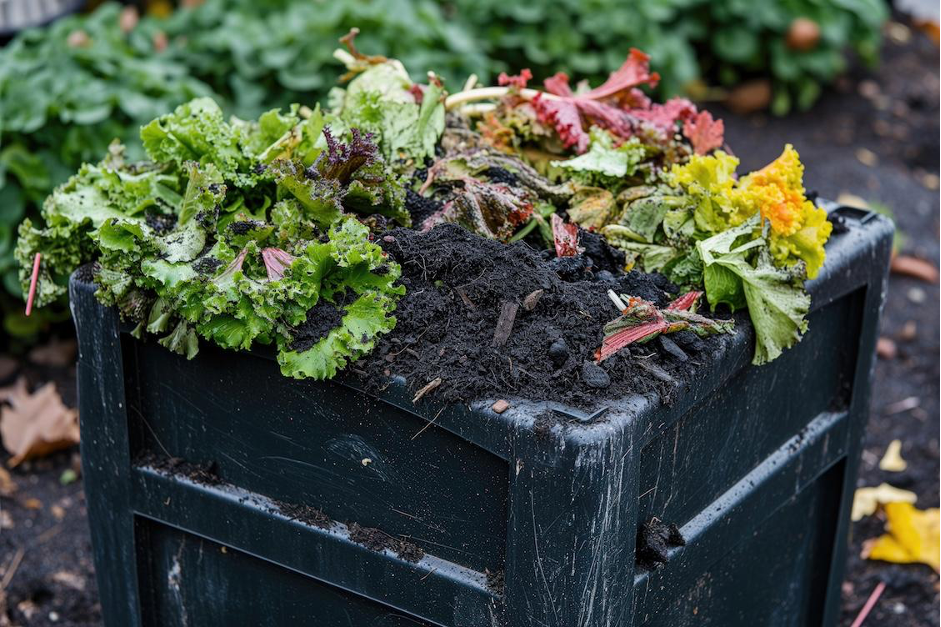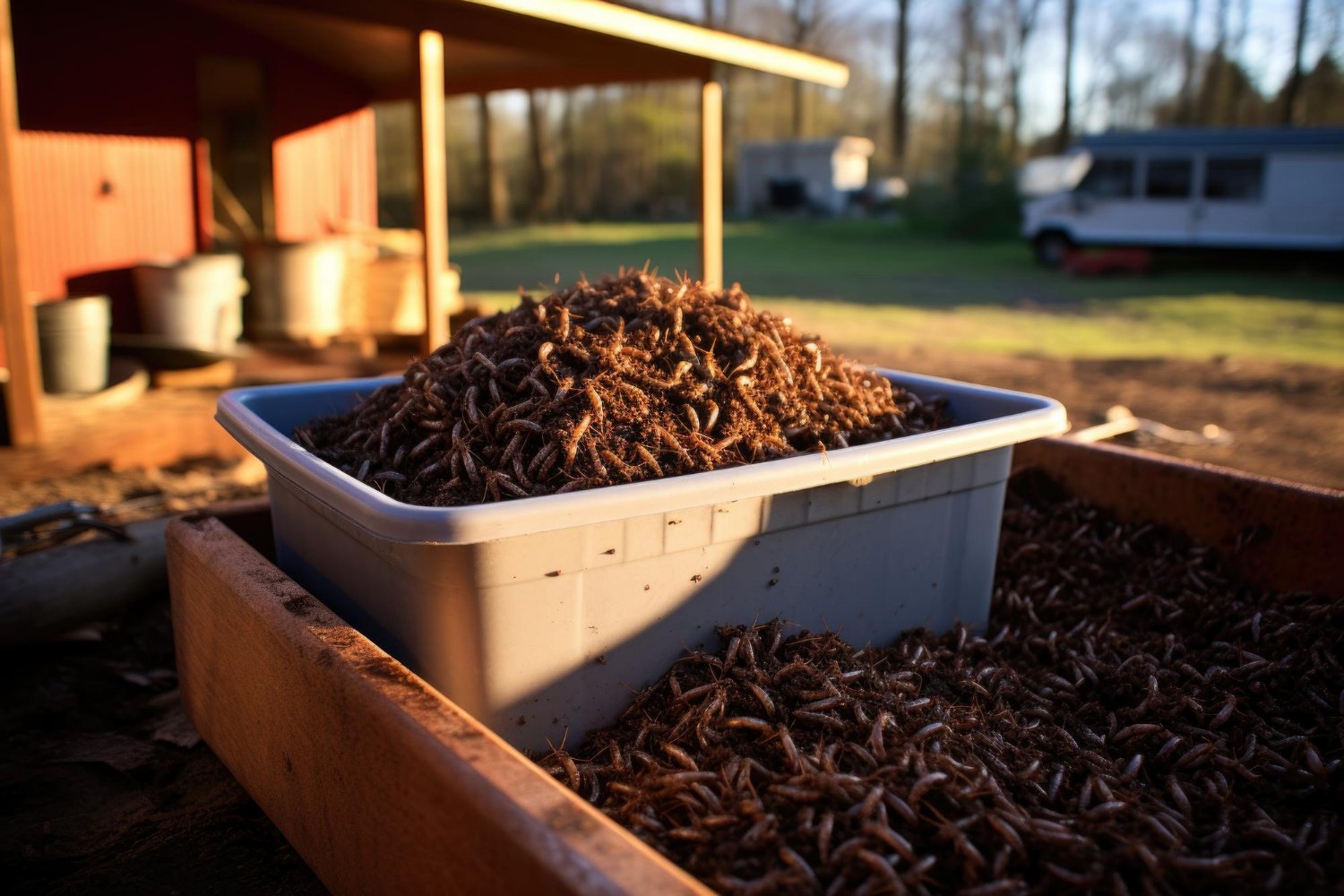Did you know that you can actually compost your dog waste and cat litter?
It’s not difficult, but you have to use a special composter that extends below the surface of the soil. You can make a pet waste composter yourself or buy a Pet Poo Worm Farm.
Whether you make your own pet waste composter or buy one, there is no smell. And the decomposed pet waste and other material you add to your composter will improve the soil below the surface.
Why you need a pet waste composter
You shouldn’t mix dog droppings or cat litter into your regular compost. Pet waste can contain harmful pathogens, but your home compost doesn’t get hot enough to kill those harmful organisms. Compost that is contaminated with pet waste could spread pathogens to lettuce and other food plants in your garden. Eating that food could make you sick.
Picking up pet waste with a plastic bag and throwing the bag into your garbage isn’t a good option, either. Most trash ends up in landfills, and landfills can pollute the surrounding soil, air and water.
You could just leave dog waste on your lawn, but that will ruin the grass. Plus, no one wants to step in poo!
How a dog poop composter is different from regular composters
The goal of each composter is different.
With a regular composter, gardeners are trying to make plenty of compost that they can spread on top of their vegetable beds and flower beds.
The aim of a dog poop composter is to get rid of the pet waste. You won’t get compost to spread on top of your gardens from a pet waste composter, but the composted pet waste will feed the soil below the surface.
That’s because the dog waste composter is built differently. With a pet waste composter, you dig a hole and insert the composter into the ground. Holes in the composter allow nutrients to seep into the soil.
A regular composter sets on top of the soil and holds the compost until you’re ready to spread it on your gardens and lawn.
Adding worms to either type of composter speeds up the decomposition process.
Placement
Most people choose an out-of-the-way spot in their lawn for their pet waste composter. You can also place it near a fruit tree, but to be safe, don’t place it near a garden where you grow food plants.
How to make a pet waste composter
A popular way to make a composter to handle dog poop is to start with a plastic garbage can. (For a smaller composter, use a bucket.) Cut or drill holes in the sides of the can. Cut the bottom off the garbage can.
Dig a hole. It should be as wide as the diameter of your garbage can and as deep as your can is high.
Place the can in the hole. Place the lid on top.
Buy a Pet Poo Worm Farm
Like the homemade composter for dog droppings, the Pet Poo Worm Farm extends beneath the soil. You will dig a hole about 20 inches wide and 20 inches deep.
The part above ground is tall so you don’t have to bend over to place the pet waste into the composter. There’s even a foot peddle to open the lid.
How to use the dog poop composter
Once you have placed your homemade composter or Pet Poo Worm Farm in the hole, it’s time to start adding material. Line the bottom of the hole with several handfuls of dried leaves or use coconut coir as worm bedding.
To keep your worms happy, add kitchen scraps such as apple cores, potato peels and carrot peels. The worms will eat poop, but giving them a variety of foods will keep them working in your composter.
Next, add pet waste. The maker of the Pet Poo Worm Farm says it can handle about six to nine pounds of dog poop per week.
Toss in some garden soil to provide grit for the worms, which they need in digestions.
Finally, add your worms. The maker of the Pet Poo Worm Farm recommends using 2,000 composting worms. You can buy a mix of 2,000 red composting worms here.
Add water as needed to keep the material moist for the worms.
The volume of material in your composter will decrease as the worms feed, but since you will keep adding material, the hole will eventually get filled. You can add to the Pet Poo Worm Farm for weeks and months, and some DIYers say they have used their pet waste composter for years. How long you can add to your composter depends on how big the hole is and how much pet waste you add. Cat litter will take up more space than dog poop.
Once the hole is filled, top it off with soil. Find a new spot and start again.










11 thoughts on “Get Rid of Dog Poop with a Pet Waste Composter”
I installed a home built digester made from a salvaged 60 gallon air compressor tank. My soil is heavy clay so drainage is difficult. I added about 12” of gravel underneath the tank and all up the sides. The tank is about 4’ tall and about 1/2 of it is below surface. So the hole I dug is about 3’ deep.
Last year even with all the gravel it was not draining good. Now it’s winter and it’s almost full because nothing is happening. I’m hoping that when it thaws in the spring time it drains before the ground is saturated with summer rains.
If in the summer I added a bunch of night crawlers would they help reduce the volume?
In the spring do you think the level will drop substantially?
Also have heard that putting a dead rodent in the tank can attract maggots and they will help reduce the volume?
I received my compost bin but the box was broken. I have pictures. And there were no screws to put it together and no instructiond
Hello Patricia;
We are very sorry to hear that. Please contact our Customer Service Department at 800.373.0555 and we can get this resolved for you.
Uncle Jim’s Worm Farm
Why is the pet waste composter safe near a fruit tree if it’s not safe around ‘food plants’?
Also, is cat waste safe to use, or only dog waste?
Thanks!
Hello Nancy;
Thank you for your question. We do not recommend that you use pet compost in any edible garden. I don’t believe that the manufacture does either as this is designed to be placed below the ground and the nutrients from the compost seeps into the ground and the waste will turn to soil eventually and go back into the earth. it is not intended to use the compost in, or place this in a veggie garden or orchard close to fruit trees that I know of. It is to get rid of pet waste without sending it to the landfill.
Uncle Jim’s Worm Farm
Then, can you clarify why you specifically suggest it in the article:
,”You can also place it near a fruit tree, but to be safe, don’t place it near a garden where you grow food plants.”
UJ -the product description says it can be placed near a fruit tree! If that’s not safe, why is the listing stating that option?
Placement
Most people choose an out-of-the-way spot in their lawn for their pet waste composter.
*You can also place it near a fruit tree*
, but to be safe, don’t place it near a garden where you grow
What happens in winter, do the worms stop working and go dormant?
I get mixed recommendation on pet poop. According to reputable website sources, since pet can have disease causing worms in their poop and the compost will not generate heat got enough then this will contaminate the soil.
I assume if the pet poop compost is isolated enough then this will be acceptable but residential backyard seems dangerous risking the worms getting to human by working near the compost area.
I have seen the dog poop used to make biogas (methane) in backyard and it will kill the pathogens because it is formed “hot” enough to kill the pathogens.
Are there studies that can show the safety of poop digested in residential areas? Perhaps a deeper into the ground will be safer?
If you mean heartworms, they rarely a danger to humans (see https://www.fda.gov/animal-veterinary/animal-health-literacy/keep-worms-out-your-pets-heart-facts-about-heartworm-disease#:~:text=Can%20People%20Get%20Heartworms%20from,bitten%20by%20an%20infected%20mosquito).
Unclejimswormfarm.com is intentionally vague, but I assume the larger concern is about E. coli bacteria, and especially antibiotic-resistant strains that may be transferred from something that the pet ate
If you mean heartworms, they rarely are a danger to humans (see https://www.fda.gov/animal-veterinary/animal-health-literacy/keep-worms-out-your-pets-heart-facts-about-heartworm-disease#:~:text=Can%20People%20Get%20Heartworms%20from,bitten%20by%20an%20infected%20mosquito).
Unclejimswormfarm.com is intentionally vague, but I assume the larger concern is about E. coli bacteria, and especially antibiotic-resistant strains that may be transferred from something that the pet ate